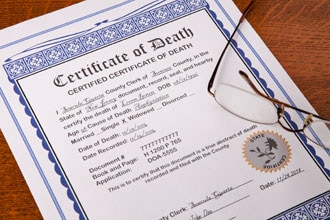How many deaths occur among children with sickle cell disease detected through newborn screening?

Despite recent progress in reducing death among young children with Sickle Cell Disease (SCD), some children with sickle cell anemia continue to die of health problems related to SCD. To fully realize the promise of newborn screening (NBS) in saving lives of children affected by SCD, health strategies must increase the following: promotion of proven therapies; comprehensive regular screening for disease-related health problems; and education of parents of children with SCD.
About this Study
The journal Genetics in Medicine has published a study which identified deaths in New York State occurring up to 9 years of age among children with SCD. This was done by linking NBS program records from New York State with vital records from New York State and New York City. The data pertain to 1,911 infants born in New York during 2000 to 2008 who were detected through NBS and confirmed to have a diagnosis of SCD, and who could also be linked to birth or death certificates from 2000 through 2009. The data linkage was performed with financial support from CDC and the National Heart, Lung, and Blood Institute/National Institutes of Health through the Registries and Surveillance for Hemoglobinopathies (RuSH) project. Data linkages of this type are crucial to the ability to monitor the health status of these children over time. You can read the article’s abstract here.
Main Findings from this Study
- A total of 21 infant and child deaths were recorded among the 1,911 children with a diagnosis of SCD.
- Deaths were most common before age 2
- Among infants with a diagnosis of SCD, those who were small at birth (less than 5 pounds, 8 ounces) were 9 times more likely to die before their first birthday than infants who had SCD but not small at birth.
- One-half (10 of 21) of deaths were classified by the authors as SCD-related. All 10 SCD-related deaths occurred among the 61% of children with SCD who had sickle cell anemia, typically the most severe type of SCD. None of the 5 deaths recorded among children with other types of SCD were related to SCD.
- Compared to all New York live births, children with SCD were slightly more likely to die between 28 days and their first birthday, but 7 to 10 times more likely to die between their first and tenth birthdays.
- Children with a milder form of sickle cell disease known as sickle-hemoglobin C disease were not more likely to die than New York children who did not have SCD.
- Among children born to non-Hispanic black mothers, death rates were roughly 3 times higher for children with sickle cell anemia than children without SCD. Among children born to Hispanic mothers, death rates were roughly 8 times higher for those with sickle cell anemia than those without SCD.
Critical Gaps & Future Directions
- Further study is needed on how children with SCD use medical services. In particular, it is important to document how often children with sickle cell anemia receive treatments, such as hydroxyurea.
- We need to track not just numbers of deaths but also problems such as stroke and overall health.
More Information
- To learn more about CDC’s activities related to sickle cell disease and sickle cell trait check out the About Us section of our Web site.
- To learn more about sickle cell disease and sickle cell trait, please visit our sickle cell disease homepage.
- To obtain free resources on sickle cell disease and sickle cell trait, please visit the free materials section of our website.
Paper Reference
- Wang Y, Liu G, Caggana M, Kennedy J, Zimmerman R, Oyeku SO, Werner E, Grant AM, Green NS, Grosse SD. Mortality of New York Children with Sickle Cell Disease Identified Through Newborn Screening. Genetics in Medicine. Advance Online Publication Sept 25, 2014: 1-8.
